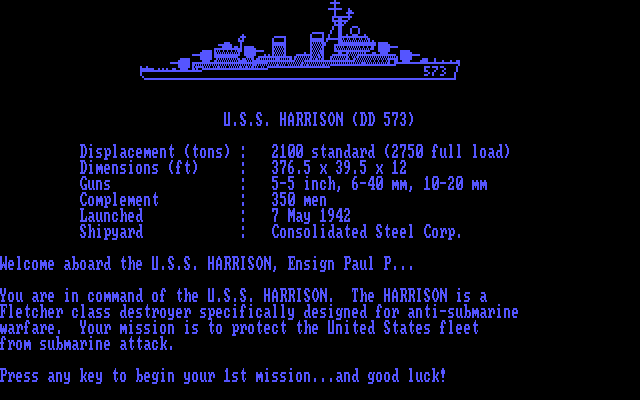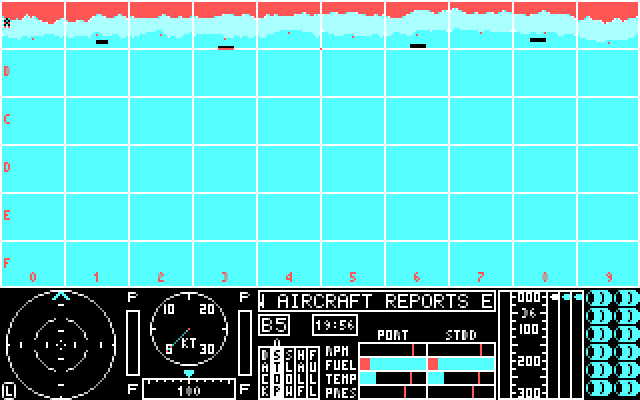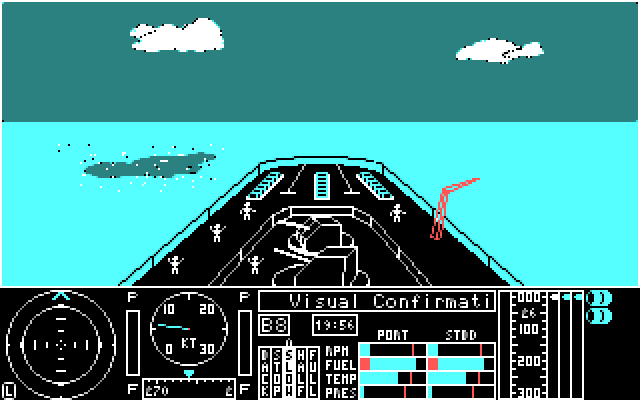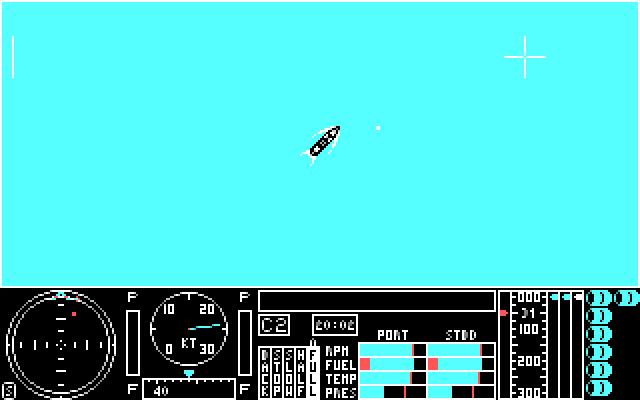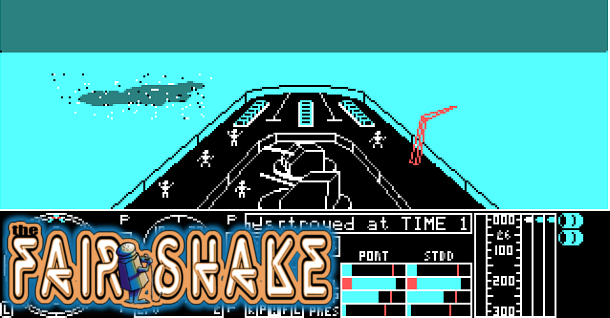
The Fair Shake
Search & Destroy: DOS
I’m not sure why I’m always drawn to games set during WWII. Perhaps it’s because my grandfather served in the US Army and was part of the D-Day invasion, as well as the liberation of France et al, so in a small way it helps me connect to the past. Maybe it’s because it was arguably the first ‘modern’ era war, where technology rapidly changed from wooden ships and planes into vessels and flying machines made of metal. Maybe it’s both, Regardless, here we are once more. Some time ago I covered the game GATO, a submarine simulation where you hunt down and destroy nameless enemy ships while running silently, deeply. Search and Destroy (S&D), a DOS game, puts you in the role of a depth charge equipped destroyer hunting submarines in WWII, much like the GATO sub you controlled.
Released in 1987 by Broderbund for the PC, the game is described in the manual as an action / strategy game. It’s played from a top down perspective, with game play taking place on two screens – a map broken up into several squares, or quadrants, or a close up view with your ship centered on screen. A dashboard of sorts makes up the lower half of both screens, containing a sonar screen, ships status, heading, damage, and remaining weapons. Every mission has one submarine that must be hunted and destroyed via depth charges, but be aware this submarine is out to destroy you, along with the fleet you are guarding!
Unlike other sims, there’s only one enemy per mission. It can only be destroyed via depth charges, or exploding barrels that sink to a predetermined depth (which you determine) before exploding. Your ship has 36 of them. Your main tool in the hunt is a sonar screen along with the occasional aid of an unseen aircraft spotter. The sonar, once figured out, is a neat feature, but it can be a little confusing at first. The top of the sonar scope is always directly in front of the ship, NOT ‘north’, regardless of the direction of the ship. Once you find the submarine, you must pull in front of it, drop some depth charges to the sub’s depth and hope they make contact. How do you know they hit? You don’t, until you see an oil slick. Easy right? No. Various missions await you as game play progresses. Some take place around islands while others place you in the center of a convoy of ships.
The graphics in S&D are on par with other early to mid 80’s sim games. You are not a simple line drawing of a ship, but an actual sprite that indeed looks like a destroyer. Other ships you are defending are also defined. The submarine and torpedoes it fires however, are just dots. That’s OK. I never feared a simple dot as much as I have during this game. Much like another game I covered, Star Fleet: The War Begins, S&D has an officer’s roster. As you go up in rank by successfully completing missions, your missions become more difficult. You will also be demoted if you lose too many ships, sink, or crash into friendly ships and sink. (whoops!)
Like most other mid 80’s PC games, sound is directed out the PC speaker. It works, with a warning chime as new messages are sent to you from your base regarding the last known position of the submarine. These are a godsend in later levels. The game is pretty much devoid of sound other than this unless of course you’re attacked or are dropping depth charges. S&D has a decent demo mission that you can watch as well as a practice mission. I posted a link to this below.
This isn’t the most advanced naval game now, but the strategy does hold up quite well even today, and even a ‘quick’ mission can take ten minutes. Today GATO is probably more widely remembered since it was available on so many platforms, but for many S&D is right on that nostalgia shelf along side. Go save the US Navy from a nameless tormenting submarine and give Search and Destroy the Fair Shake.
